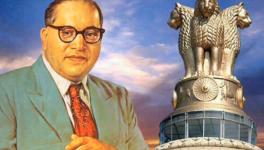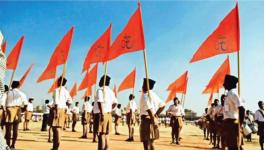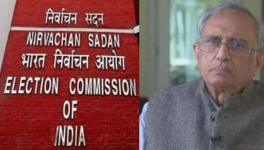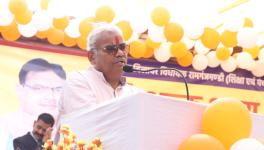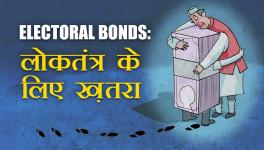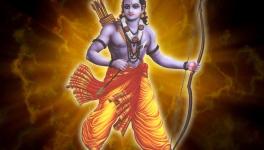Education for Hindu Rashtra: UGC-NCERT’s Right-wing Drive
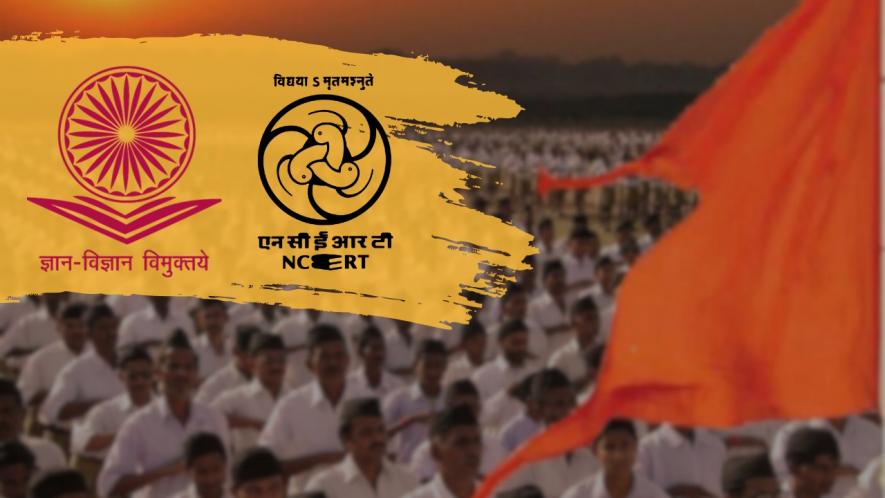
As the ruling Bharatiya Janata Party inches closer to completing two terms in office, its impact on institutions is more than evident. While the Enforcement Directorate, income tax authorities and the Central Bureau of Investigation (CBI) have played their role in cornering the opposition parties, the Election Commission has sometimes been partisan. Now, it is evident that the University Grants Commission (UGC) and the National Council for Educational Research and Training (NCERT) are also not far behind in trying to change the educational system and structure to suit the political ideology of the ruling party.
New instructions are regularly sent to educational institutes to introduce Hindu nationalist sentiments and ethos among students. When the present government was trying to intimidate and undermine student movements, it labelled their protests as anti-national. Former minister of Human Resource Development, Smriti Irani, proposed installing a tall pole in each university to hoist the national flag. Another idea was floated to place a decommissioned military tank on the Jawaharlal Nehru University premises, where students were publicly debating issues, a concept that goes against the grain of the government’s thinking.
More circulars have been issued in recent days. One says students must participate in year-long celebrations of the birth centenary of Dattaji Didolkar, a Rashtriya Swayamsevak Sangh pracharak who set up the Akhil Bhartiya Vidyarthi Parishad (ABVP). This cult-building exercise for a Hindu nationalist is mainly meant for colleges in Maharashtra. Is the UGC right in promoting the celebration of figures from the Hindu nationalist stable? Indeed, the UGC must promote those who stood for Indian nationalism or fought British colonial rule. But Didolkar was never part of either strand of the freedom struggle, nor does he represent the values enshrined in the Constitution of independent India.
Yet another circular demands the setting up of ‘selfie points’ with Prime Minister Narendra Modi in the backdrop. Such a step is being taken with the 2024 Lok Sabha election in mind and has no place in a democratic country. It amounts to propaganda for one party and its supreme leader. It violates the ethos of democracy, blatantly violates democratic and constitutional values, and is a gross abuse of power.
That is not all. One recent instruction says that students from standards seven to 12 should be taught the Ramayana and the Mahabharata as part of the history curriculum and placed in the ‘classical period’. Per the NCERT expert panel, learning the Ramayana and Mahabharata will instil self-esteem, patriotism and pride.
India’s two great epics are a part of our mythology and can impart tremendous knowledge about society and norms of the times they were written in. These great epics provide valuable insights into periods of history mired in vague understanding or incomplete knowledge.
The Ramayana is popular beyond India, in Sri Lanka, Thailand, Bali, Sumatra, and elsewhere. Interestingly, it has many versions. Originally written by Valmiki, it was further popularised by Goswami Tulsidas’s Avadhi epic Ramayana. It became part of popular culture in northern India from the 16th century onwards. The many versions of the Ramayana result from its diverse origins and geographic spread. But the Hindu nationalists promote just one version of the great epic. Paula Richman’s Many Ramayans: The Diversity of a Narrative Tradition in South Asia, first published by OUP in 1991, explores the diverse versions of Lord Rama’s story. The noted scholar AK Ramanujan’s remarkable essay, ‘300 Ramayans: Five Examples and Three Thoughts on Translation’, was included in the teaching at The University of Delhi until 2011, when Akhil Bharatiya Vidyarthi Parishad activists protested, and the university buckled under pressure.
Hindu nationalists want to project just one particular version of Lord Rama’s story as authentic when Ramanujan tells us about its diverse tellings: the Jain, Buddhist, and women’s versions (the last by Ranganayakamma). Even the ‘Adivasi Ramayana’ has a different storyline than all others, a fact mainstream media and the government wish to paper over.
BR Ambedkar drew our attention in his book, ‘Riddles in Hinduism’, to the killing of Shambuka during his penance by Rama, as the Shudras being denied scriptural equality. Rama also killed Bali, a revered ruler among some marginalised communities. The chant, ‘Eida Pida Javo: Baliche Rajya Yevo--Let our pains go, Let Bali return as king’. Ambedkar is critical of Rama banishing Sita into the forest on suspicion of infidelity. Periyar is also critical of Lord Rama for imposing North Indian Aryanism on the Dravidas.
Similarly, Maharishi Ved Vyas’s Mahabharata, the longest poem ever composed, provides valuable glimpses into our past. All our epics are essential sources of historical knowledge, but to import them into the history syllabus does justice neither to history nor epics nor our understanding of mythology. It is linked more to the Hindu nationalist agenda than unravelling the truth about the past.
Among other moves of the panel is one that instructs that the name India be replaced with Bharat on the ground that India denotes slavery, as it has British origins. What is being deliberately suppressed is the pre-existence of variations of the word India from times long before the British arrival. As early as BCE 303, the Greek traveller and diplomat Megasthenes used the word Indica. Derivatives signifying India that arrive from the river Sindhu have been in vogue from early times. That is why “Bharat that is India” in the Constitution is the perfect formulation for us all. But Hindu nationalism is uncomfortable with the diversity, inclusivity and openness that India/Bharat represents. They desire to re-periodise Indian history. The British called the early period of Indian history the ‘Hindu period’, while the Hindu nationals now want it to be called the ‘Classical Period’. The idea is to present the values of that period as the baseline for today’s society. Many of those values can be found in the Manusmriti, and the ones being promoted are precisely those which made Ambedkar rebel against this book.
The author is a human rights activist. The views are personal.
Get the latest reports & analysis with people's perspective on Protests, movements & deep analytical videos, discussions of the current affairs in your Telegram app. Subscribe to NewsClick's Telegram channel & get Real-Time updates on stories, as they get published on our website.











